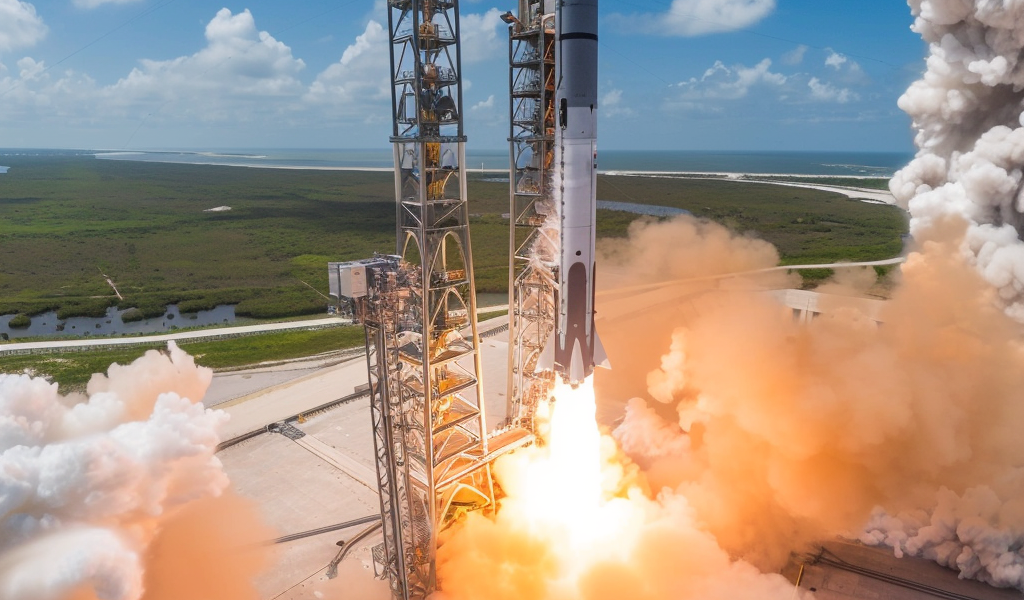Blue Origin Successfully Conducts Hot-Fire Test for New Glenn Rocket Ahead of Inaugural Launch
In a significant milestone for space exploration, Blue Origin, the aerospace company founded by Amazon’s Jeff Bezos, successfully executed a hot-fire test of the second stage of its New Glenn heavy-lift rocket. This critical test took place on Monday, marking a pivotal step ahead of the rocket’s inaugural launch scheduled for November.
The hot-fire test lasted approximately 15 seconds and was designed to assess the interaction between the various subsystems of the second stage, known as GS2, as well as the two BE-3U engines and the ground control systems. This thorough evaluation is essential to ensure that all components work seamlessly together during the upcoming launch.
During the test, Blue Origin engineers scrutinized several key systems, including the tank pressure control system, which is responsible for pressurizing the liquid hydrogen and liquid oxygen tanks with helium during flight. Additionally, the thrust vector control system was evaluated to confirm that the gimbal-mounted engines can be maneuvered effectively throughout the rocket’s flight.
The hot-fire test also validated the start and shutdown sequences of the BE-3U engine systems. These engines are designed with the capability to restart up to three times during a mission, providing flexibility and reliability for various space missions.
Alongside the technical tests, the launch crew utilized this opportunity to practice essential launch procedures and refine the timing of critical processes required for the rocket’s launch.
The New Glenn rocket stands at an impressive height of over 98 meters. Its first stage is powered by seven BE-4 engines, which are touted as the most powerful liquefied natural gas (LNG)-fueled, oxygen-rich staged combustion engines ever utilized in a rocket. Blue Origin has indicated that this first stage can be reused up to 25 times, significantly enhancing the efficiency and sustainability of space missions.
The second stage of the New Glenn rocket, currently undergoing testing, is engineered for demanding, high-energy missions targeting low Earth orbit (LEO), medium Earth orbit (MEO), and geosynchronous orbit (GEO). This stage measures approximately 26.8 meters in height and boasts a diameter of 7 meters. Each of its two BE-3U engines generates a vacuum thrust of 173,000 pounds-force (lbf), surpassing the original design specification of 160,000 lbf. These engines are recognized for their exceptional thrust-to-weight ratio among hydrogen engines.
With the maiden flight of New Glenn (NG-1) on the horizon, anticipation is building for the launch, which is set to take place from Launch Complex 36 in Cape Canaveral, Florida. This launch will not only signify Blue Origin’s entry into the competitive heavy-lift launch market but also represent a step forward in the company’s broader vision for space exploration.
As Blue Origin continues to make strides in rocket development and testing, the successful execution of the hot-fire test reinforces the company’s commitment to advancing space technology and expanding access to space. The upcoming launch of the New Glenn rocket is poised to be a landmark event in the field of aerospace engineering and exploration.





